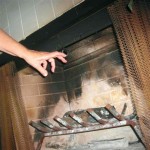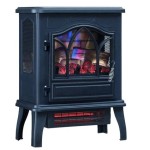Fireplace Insert Flue Pipe: Essential Guide
A fireplace insert flue pipe is a crucial component that connects your insert to the chimney and ensures proper ventilation of combustion gases. Its role is to safely exhaust smoke, ensuring a safe and efficient heating experience. Understanding the essential aspects of fireplace insert flue pipes is essential to ensure they function optimally and meet safety standards.
1. Material and Durability: Flue pipes are typically made from galvanized steel, stainless steel, or aluminum. Galvanized steel is a cost-effective option, while stainless steel offers superior durability and resistance to corrosion. Aluminum pipes are lightweight and rust-resistant, but less durable than steel. Choose a material that suits your fireplace's needs and environment.
2. Size and Length: The size and length of the flue pipe must match your fireplace insert and chimney specifications. Improperly sized pipes can restrict airflow or create dangerous backdraft. Ensure the diameter and length of the pipe are compatible with your insert and chimney.
3. Connection Type: Flue pipes can connect to the insert and chimney using various methods. Slip-fit connections slide over the pipe ends and are secured with screws. Clamp connections use metal bands to fasten pipes together, providing a tight seal. Weld connections permanently join pipe sections, ensuring a secure and leak-proof connection.
4. Insulation: Insulated flue pipes prevent condensation and minimize heat loss, improving fireplace efficiency. They also help protect the pipe from extreme temperatures and corrosion. Consider using insulated pipes in areas with significant temperature fluctuations or cold climates.
5. Clearance: Maintain proper clearances between the flue pipe and combustible materials in your home. Building codes typically require a specific distance to prevent fire hazards. Ensure clearance is maintained throughout the pipe's length, including around corners and intersections.
6. Inspection and Maintenance: Regular inspection and maintenance of your fireplace insert flue pipe are essential for safety and performance. Inspect for damage, corrosion, or blockages that could compromise airflow or pose a hazard. Clean or replace the pipe as needed to ensure proper ventilation.
Conclusion: Fireplace insert flue pipes are essential components that play a critical role in the safe and efficient operation of your fireplace. By choosing the right material, size, connection method, and insulation, you can ensure optimal performance and peace of mind. Regular inspection and maintenance will extend the lifespan of your flue pipe and enhance the enjoyment of your fireplace.

Why Choose A Fireplace Insert Made In America Xtrordinair

High Quality Direct Vent Liner System For Gas Inserts 46dva Cl33 4dt 33ik35vb Friendly Fires
Understanding How Direct Vent Works Heat Glo

Emma Marble Fireplace Insert Stove Flexible Flue Kit Package

All About Prefabricated Fireplaces Chimney Savers

Wood Fireplace Insert Installation Overview By Rockford Chimney Supply

Chimney Flue Exhaust Kit Fireplace Insert For Corn Or Wood Pellet

How To Choose The Right Stove Flue Pipe Mybuildingsupplies Ie

Why Get A Fireplace Insert Wood Gas Inserts In Tn Al

Fireplace Installation Full Service Chimney Serving Kansas City Area
Related Posts








